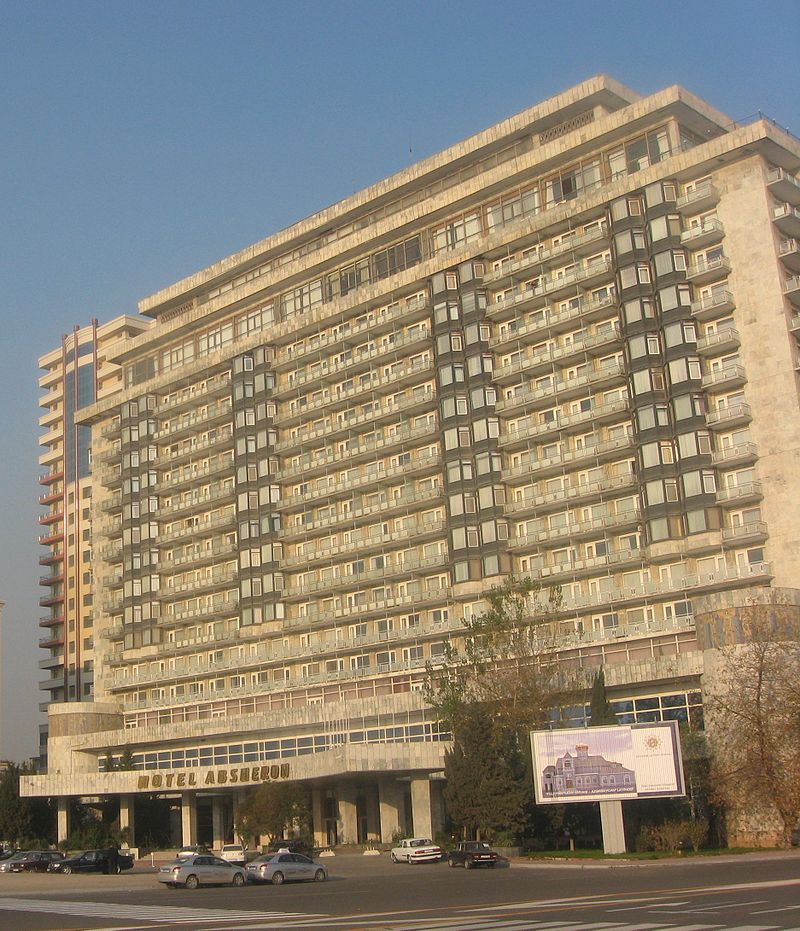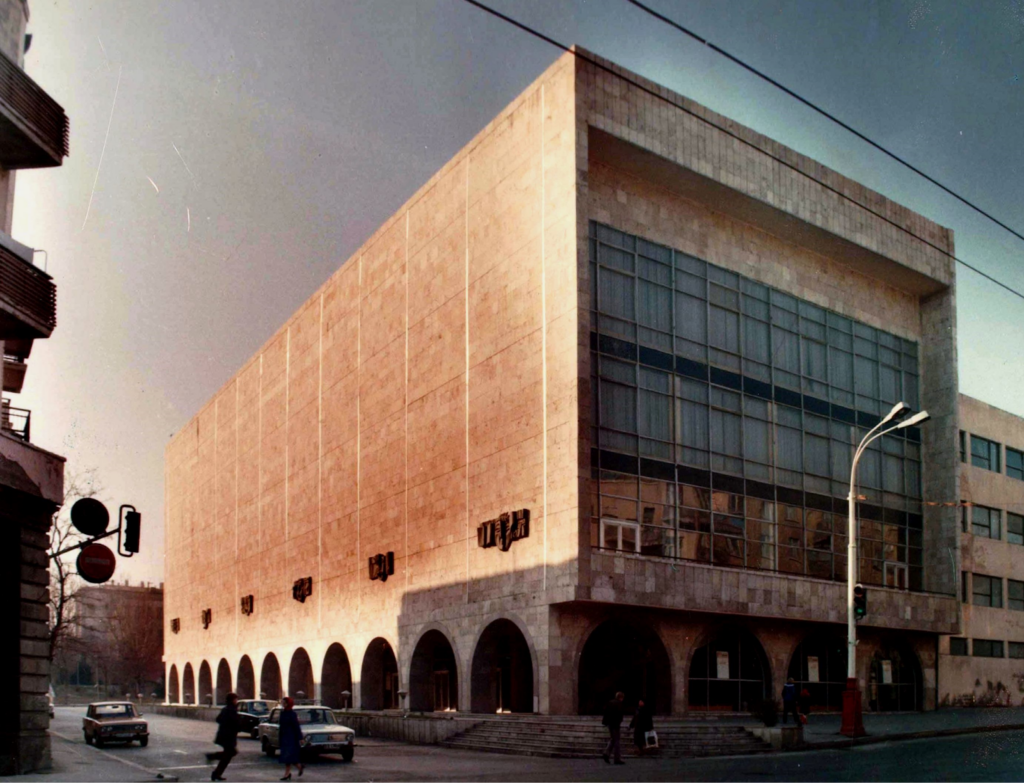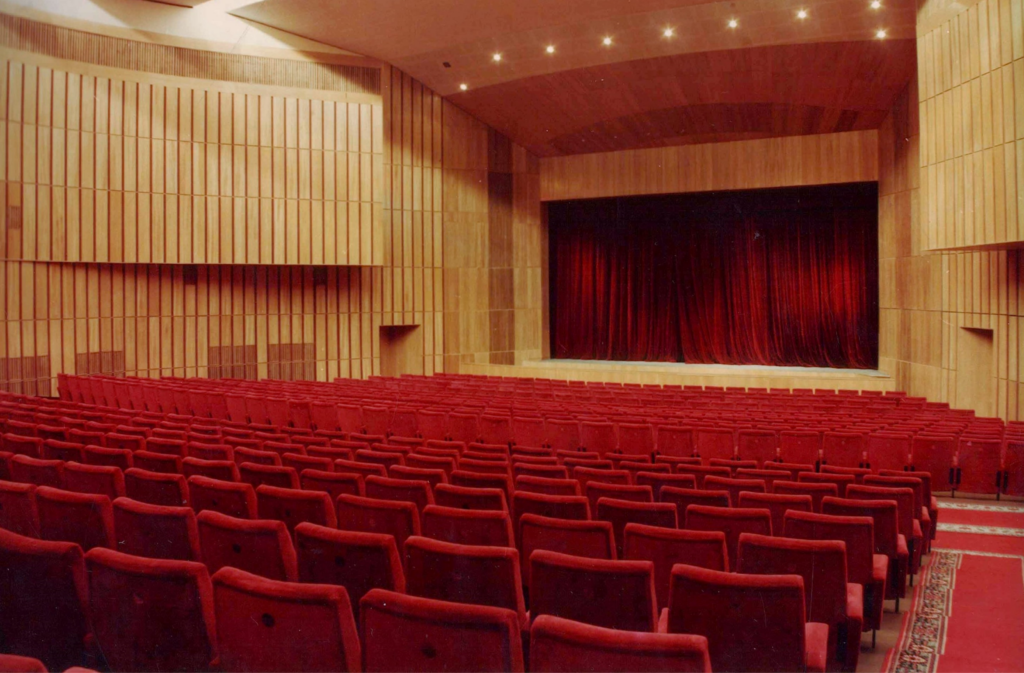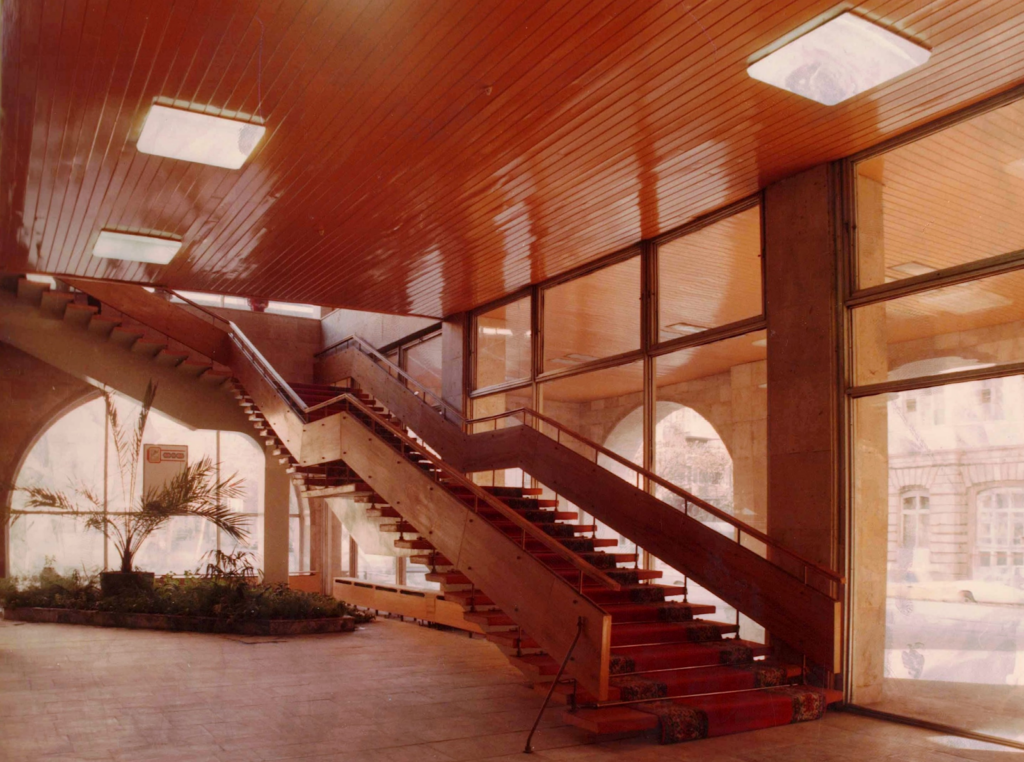Architect
Alla Vronskaya, last edited on 12.04.2023
Name:
Anna Oltetsian / Ru: Анна Сергеевна Ольтециан
Life Dates:
1917 – ?
Country:
Employers:
AzerDovlatLayiha
Field of expertise:
Architectural design
Education:
Azerbaijan Industrial Institute (1941)
Baku Art College (1945)
Awards:
Distinguished architect of Azerbaijan
Prize of the Council of Ministers of the USSR
Oltetsian was born in 1917 into a rich Armenian family in Baku: her father was a banker, and her mother was an oil industrialist’s daughter. After the Soviet revolution, her father was subjected to political repression. Having finished high school in Baku, in 1935 Oltetsian became a student at the department of architecture of Azerbaijan Industrial Institute, from which she graduated in 1941. Due to the war, she did not work, but instead studied at the Art College, from which she graduated in 1945 as a theater stage-set artist. Upon graduation, she moved to work at AzerDovlatLayiha, where she remained until 1990, working in the workshop of the luminary of Azerbaijan architecture Mikael Useynov. She was honored as a distinguished architect of Azerbaijan and was a recipient of the Prize of the Council of Ministers of the USSR. In 1990, Oltetsian moved to Moscow, where she continued working.
Among her single-authored projects are residential buildings in Baku and the building of the Opera Studio of Azerbaijani State Conservatory (1968). With Useynov, she designed the buildings of the Academy of Sciences of Azerbaijan, several residential buildings in Baku, hotels Azerbaijan (1969), Absheron (1965), Moskva, Vladikavkaz (all in Baku), and unrealized projects for museums in Baku and Nakhichevan, as well as for the library of the Academy of Sciences of Azerbaijan. Between 1990 and 2003, she designed a cottage village in the Moscow region and several residential buildings in Moscow.
I am Armenian by nationality and was born on September 21, 1917 in Baku. My grandfather came from a very rich merchant family. He had two sons: Gavriil Babaevich Beglarov and Mikhail Babaevich Beglarov. In the middle of the 19th century they moved to Baku. At that time there was an oil boom in Baku, the grandfather bought oil plots and in time he became one of the ten richest oil industrialists in the city. My grandmother graduated from a boarding school for noble girls and gave my mother an excellent education – she knew foreign languages, world literature and geography. I received a virtually European education and was shaped by my mother’s family.
Baku was a metropolitan European city, where many celebrities came to visit. We had our own house, which was designed by the famous Polish architect Ploszka – he was the author of the best buildings in Baku. My younger sister Ira and I went to school. My mother introduced us to classical music and taught us foreign languages. Later my younger sister became seriously interested in French, visited France many times and became a professional translator.
I studied very well, my parents never had to control me. I was good at drawing, and as soon as my mother discovered some talents in us – she hired us teachers. After school I was hesitant: I liked medicine and I liked architecture. But in the end I got into architecture. At that time, only children of workers and peasants were accepted to universities and everyone in Baku knew my last name. My mother was very worried that I would not get in. But I passed my exams and was accepted. I proved myself as a talented girl – I was considered one of the best students, I swam well, played ping-pong, skated and played lawn tennis.
After graduating with honors from the institute in 1941, I immediately received an offer from the Azerbaijan architect Mikayel Useynov to work in his studio. It was very prestigious. I arranged to go on vacation and start working in September. But the war broke out, and the design institute was closed. I started designing bomb shelters.
At the same time, I went to the theater college, to the department of stage-set design, my diploma work was on Ostrovsky’s “Thunderstorm” – scenery, makeup, costumes. At that moment Useinov called me and told me that the workshop was open and, if I hadn’t changed my mind, he was waiting for me. It’s not that I changed my mind, I ran. We immediately had so much work that to prepare for the diploma, there was no possibility. I was very interesting to work. I did not take care of small things – Useynov immediately appointed me as his assistant on big projects. We built apartment buildings in Baku. He and I became very good friends.
We were designing the complex of the Academy of Sciences of Azerbaijan – a colossal presidium building and the institutes of physics, chemistry, geology. All these were five-story buildings, and each institute had its own designs. I was the chief architect of the project – it all had to be coordinated. Those scientists wanted something impossible. We decided that this would not work. Useynov knew Shchusev perfectly well, and he asked him to accept me, so that Alexey Viktorovich could help us find a technologist. I was warned that Shchusev was very strict and reserved. He received me very well, we got to talking and talked for three hours. He was a very interesting person.
I was acquainted with many interesting people thanks to Mikael Useinov. One of them was Sergey Merkurov, a sculptor, a native of Leninakan, an Armenian, the author of the Lenin and Stalin monuments. We became very friendly with his family. Merkurov himself bought a piece of granite and created the high relief “The execution of the 26 Baku commissars”. He told Useinov that he wanted to donate this sculpture to the city of Baku. Useynov went to Bagirov and informed Merkurov of his request. The monument was installed in the square of the Twenty-sixth Baku Commissars. Amazing work of art! Unfortunately, this masterpiece was destroyed during the events in Baku.
In 1965, we started designing Intourist in Baku – we did three high-rises: “Azerbaijan”, “Apsheron”, “Moscow”. I was Useynov’s co-author. It was a very interesting job – I learned a lot from foreigners. We had never seen finishing materials of such quality in our eyes – the Germans supplied the carpet, the Yugoslavs in Zagreb made us aluminum stained-glass windows.
Designing a building is a complex, multi-stage process. The first stage is the design brief. Such a project can be done in three to four months. The second stage is working drawings. Then approval. There are constant changes along the way, the work goes on. To design a building, I have to know what equipment there will be, what technologies will be used. For example, we designed the Intourist for a very long time.
There was a very interesting story with the approval of the Intourist Hotel project. Objects that cost more than a few million were approved by the Gosstroy of the USSR. Mikhail Vasilievich Posokhin was its chairman at the time. We came to Moscow for project approval, and the chief architect was Anatoly Trofimovich Polyansky. He had a tremendous support in the Kremlin. He designed the Yalta hotel in Yalta and built the Pearl hotel in Sochi – he wanted to get Baku as well. And that’s where the intrigue began.
There is a norm: a room for two people for the Intourist Hotel is 12 square meters. But when you make a rigid reinforced concrete frame, you are connected to the structure. We got 12.2 square meters per room. He multiplied a thousand and two hundred seats and rejected the project on that basis – there was nothing else to complain about.
Useynov told me then: “I created the project. If they want to approve it, let them approve it; if not, I won’t jump in front of them. He turned and left, leaving me as a victim. At that time Posokhin was designing in Pitsunda, and since there was no prefabricated frame yet, I went to Pitsunda. His co-author, Ashot Mikoyants, showed me everything on the spot and told me everything. And their pitch was the same as the one we had accepted: 6.40 x 4.80. When I was given the floor, I asked him what he would do. When they gave me the floor, I turned to Posokhin. I told him, “I’ve been to Pitsunda. Don’t be offended, Mikhail Vasilievich, but we accepted your move. Everyone who sat in the presidium said, “Mikhail Vasilyevich, this is a genius decision!” In the end the project was approved. We got an “excellent” grade and a big award.
I didn’t have any relatives in Baku – they all moved to Moscow. My relatives kept calling me to the capital, saying: “Why are you sitting there alone? But I was very comfortable in Baku, I had a beautiful apartment, I wore clothes from the most expensive dressmaker and I did not need anything – my salary was 450 rubles, I could not only support myself, but also help my Moscow relatives. There was a department store on the first floor of the house where I lived. We were friends with the head of the store, and when he got a shortage of anything, and in Soviet times almost everything was in short supply, he would call me. I would come and there would be a battery of boxes in front of me, and I would send it all to my family.
I didn’t move to Moscow until 1990. I don’t regret a thing: my life was very interesting and eventful!
Source:
Elena Khurstaleva, “Anna Oltetsian: Ia ni o chem ne zhaleyu,” Noev kovcheg, No. 17 (200), September 2012: https://noev-kovcheg.ru/mag/2012-17/3446.html





Elena Khurstaleva, “Anna Oltetsian: Ia ni o chem ne zhaleyu,” Noev kovcheg, No. 17 (200), September 2012: https://noev-kovcheg.ru/mag/2012-17/3446.html
https://www.baku.ru/enc-show.php?cmm_id=276&id=161387&c=1752
Main image: https://noev-kovcheg.ru/mag/2012-17/3446.html (last accessed on 23.05.2022)
Fig. 1: https://ru.wikipedia.org/wiki/%D0%90%D0%BF%D1%88%D0%B5%D1%80%D0%BE%D0%BD_(%D0%B3%D0%BE%D1%81%D1%82%D0%B8%D0%BD%D0%B8%D1%86%D0%B0)#/media/%D0%A4%D0%B0%D0%B9%D0%BB:%D0%93%D0%BE%D1%81%D1%82%D0%B8%D0%BD%D0%B8%D1%86%D0%B0_%D0%90%D0%BF%D1%88%D0%B5%D1%80%D0%BE%D0%BD_2008.jpg (last accessed on 23.05.2022)
Fig. 2: https://dic.academic.ru/pictures/enc_pictures/1827.jpg (last accessed on 23.05.2022)
Figs. 3-5: Photographs from the private archive of Abdul Huseynov, courtesy of Abdul Huseynov.
We assume that all images used here are in public domain. If we mistakenly use an image under copyright then please contact us at info@womenbuildingsocialism.org or here.